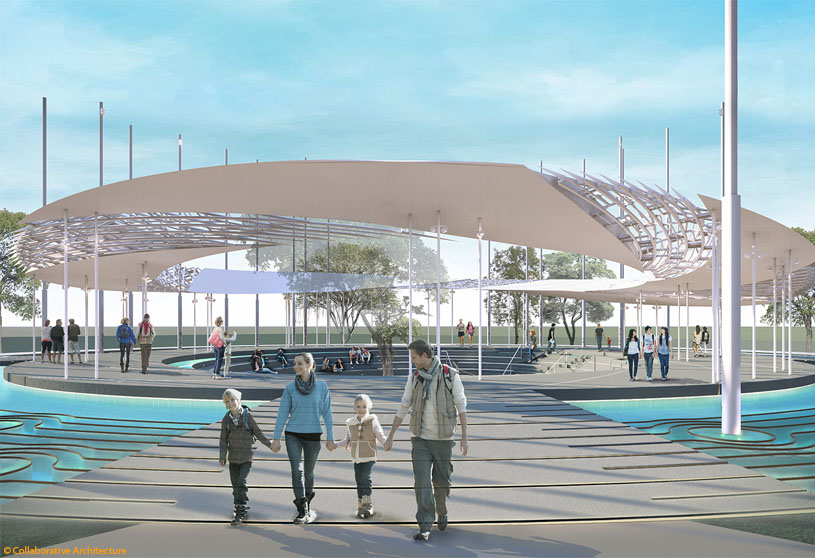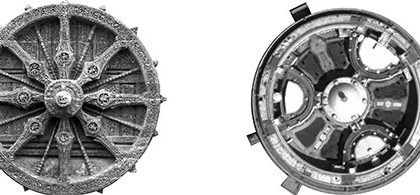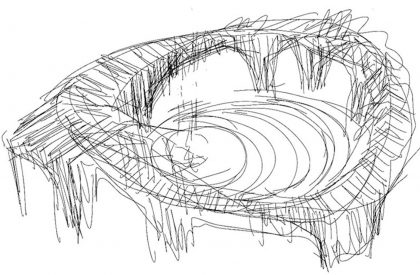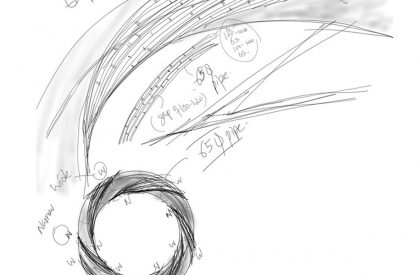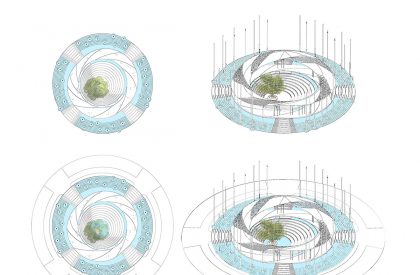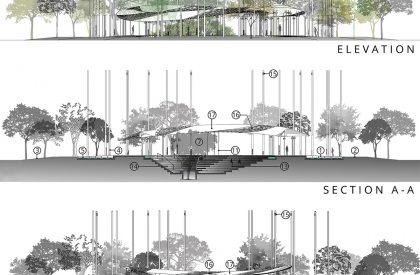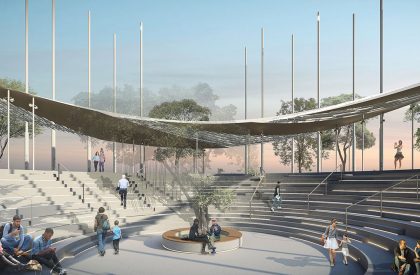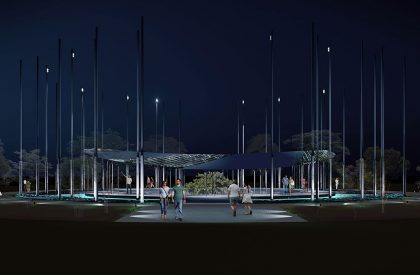Excerpt: National Unity Pavilion, designed by Collaborative Architecture, is an attempt to present the syncretic cultural imprints of India as a nation through layered references- the so called historical & cultural palimpsests, which are enshrined in the deep psyche of the idea of India. The Unity Pavilion celebrates the lineage of Buddha, Asoka and Gandhi and latches on the associative references and their undeniable impact on the idea of the nation.
Project Description
[Text as submitted by architect] What is the sini qua non of any nationhood?
What defines the nation, beyond the globally recognized physical boundaries and the network of institutions that lend legitimacy to the nationhood
What is the idea of India?
And finally, is architecture, remotely capable of capturing that idea?
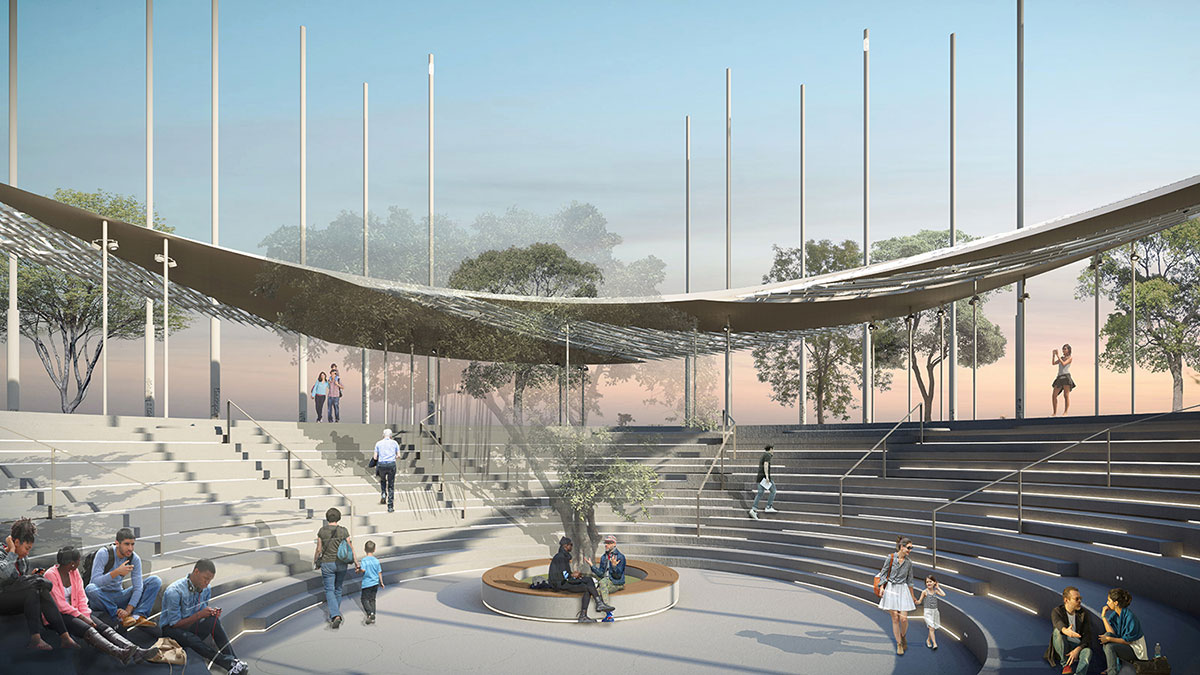
The proposed design, named as ‘National Unity Pavilion’ tries to encapsulate these fundamental questions and re-submit them to the visitors within the syncretic cultural imprints of the nation.
For a nation, as diverse and complex on every index, as India is; it is almost a futile exercise even to attempt in engaging in one of those architecture’s great follies- searching simplistic architectonic adventures to represent a highly complex, culturally rich and diverse and often contradictory & competing, not to mention, a much compromised idea.

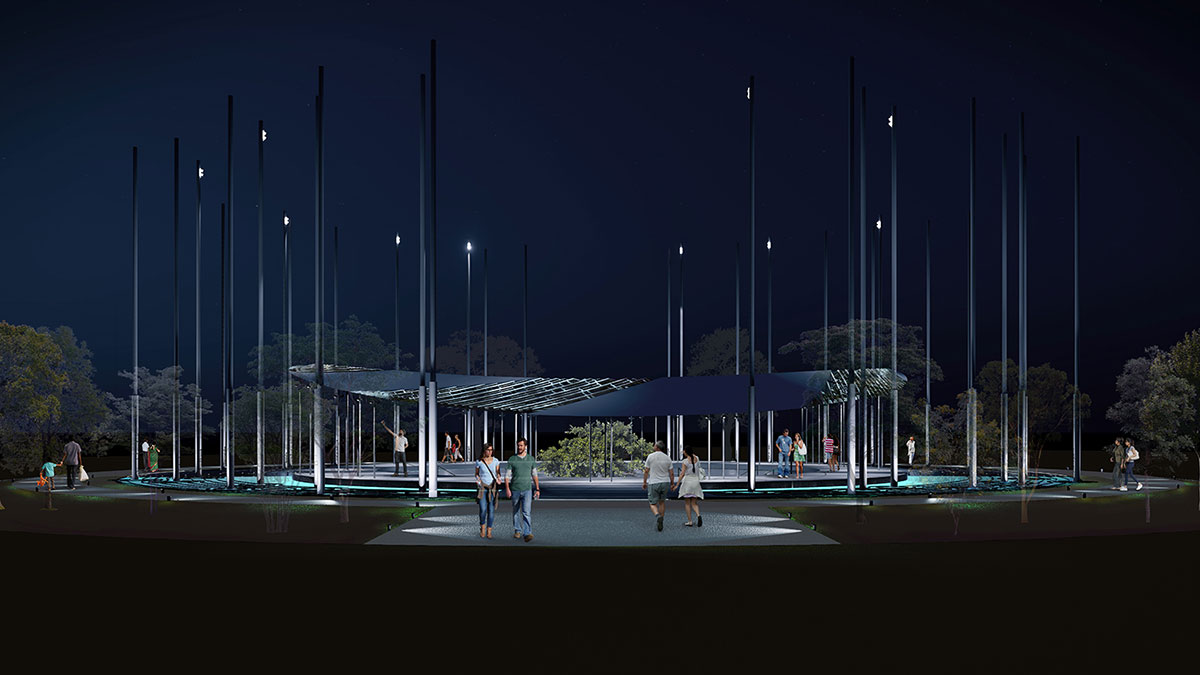
The design for National Unity Pavilion is an attempt to present this through layered references- the so called historical & cultural palimpsests, which are enshrined in the deep psyche of the idea of India. Add the layer of democratic foundation of the nation and the lofty ideal of unity in diversity that has been etched in the constitution; the foundational spokes of federalism which mandates a thriving nation, rooted in modernity, tempered by a scientific approach, regardless of caste, creed, religion, language etc.

The Unity Pavilion celebrates this lineage of Buddha, Asoka and Gandhi and latches on the associative references and their undeniable impact, on the idea of the nation.

The pavilion’s diameter matches that of Stupa at Sanchi; so is the overall volume, with pylons, that represent each State / Union territory. Mandalas- the ancient syntax of architectural spaces to generate and control the geometry and the architectonic sequencing of the pavilion- the palimpsest of spatial organization, clarified through overlapping mandalas

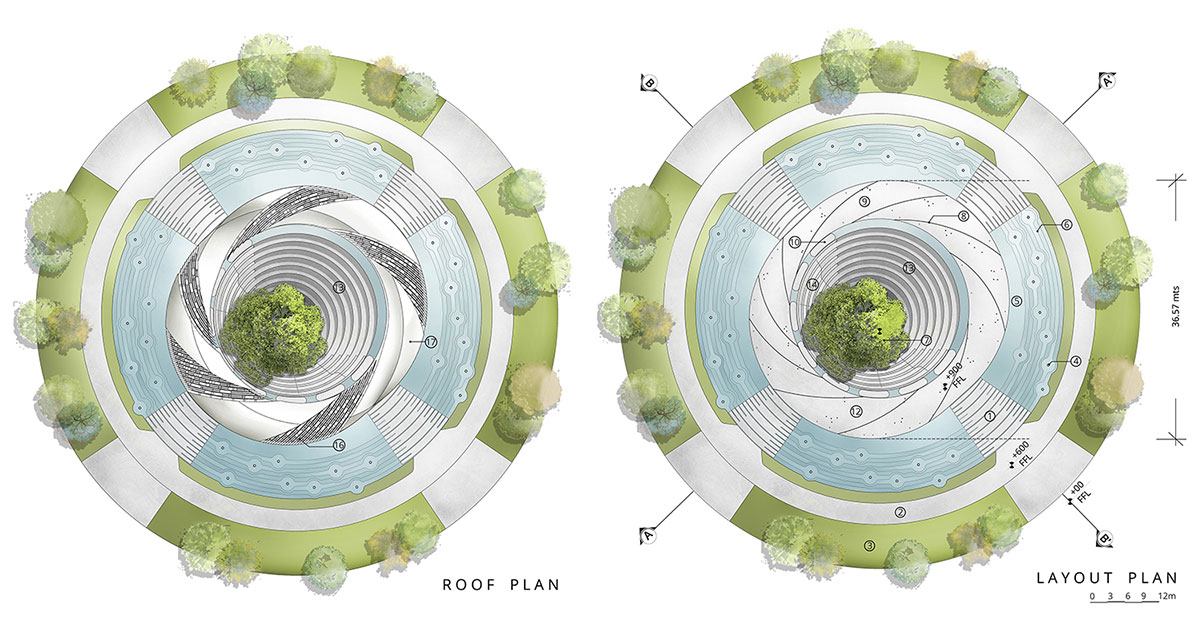
The circular path, set for encountering and experiencing the space and the pavilion, immediately transports the visitors, to their experiential encounters of higher calling and a reference to Dharma chakra, a common thread of India’s great religions.

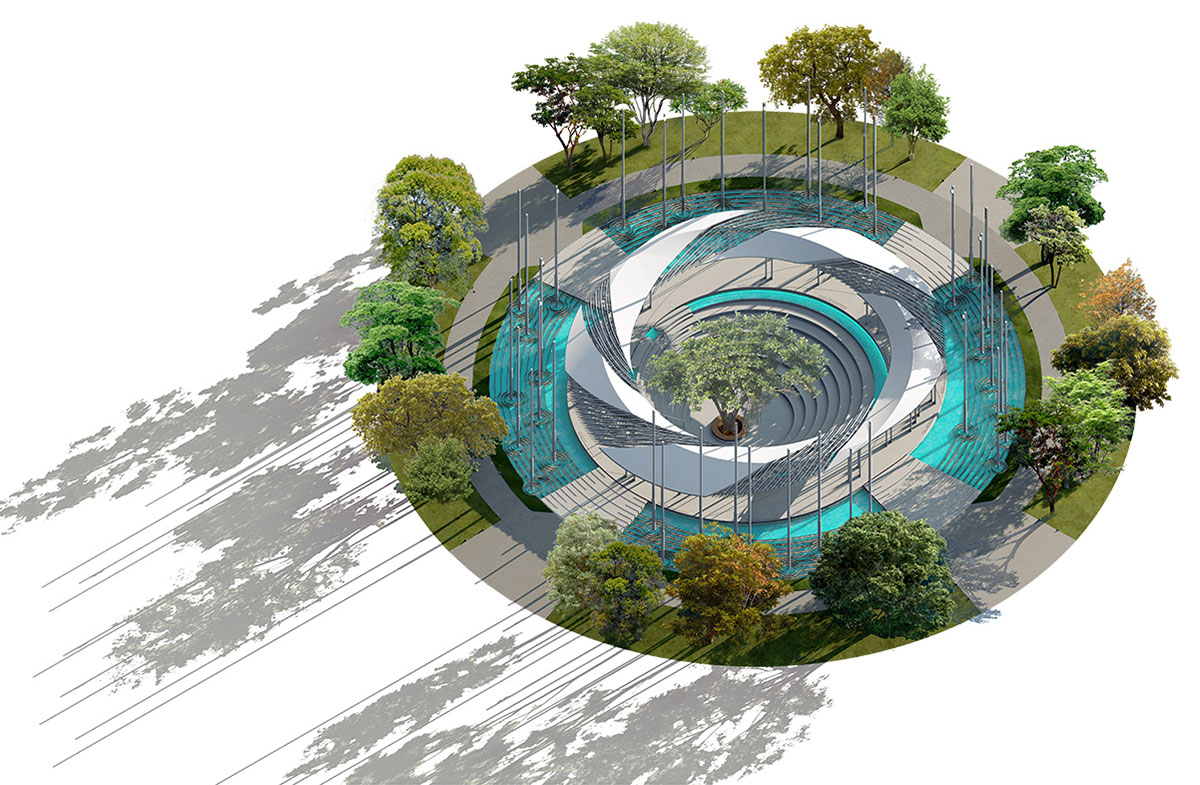
The Unity Pavilion is also a powerful symbol of India’s fledgling democracy; its idea of bringing people together to disseminate ideas, deliberate differences and celebrate diversity, which are the cornerstones of the Idea of the nation. The amphitheater, with the Bodhi tree as the genius loci, distills the omnipresent idea of India- an idea that has strong philosophical foundations in its rich antiquity and teachings; at the same time a modern nation, committed to preserving the idea of dialogue and critique, but collective solidarity, in preserving the nationhood.
